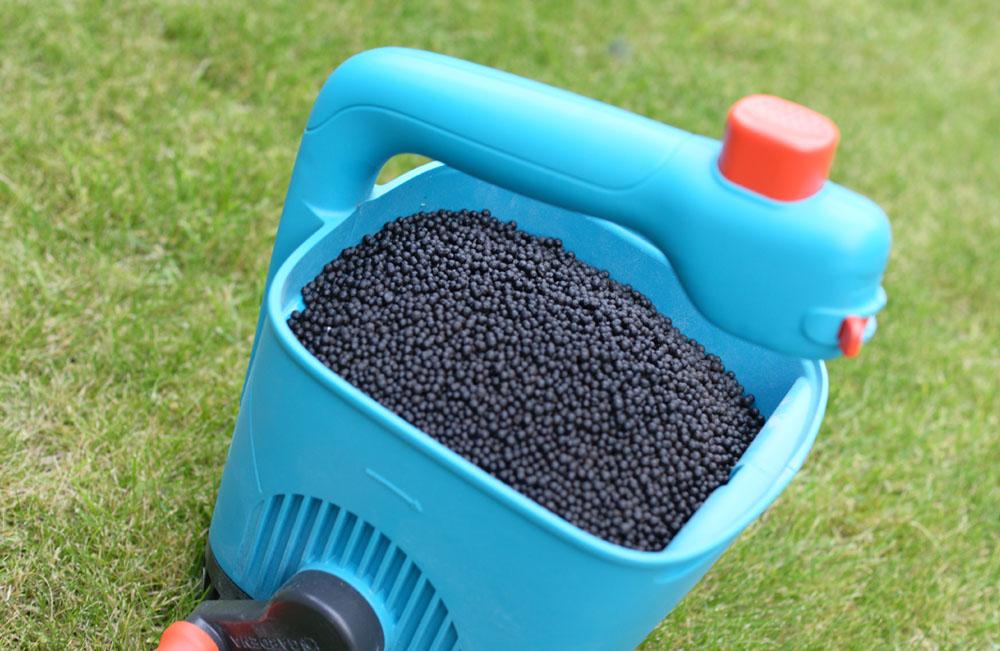
Created By
Matt Adams
Updated On
- February 29, 2024
Get FREE Exclusive Access
Keep your lawn pristine with exclusive tips, offers and insights that I only share with my private subscribers.
Latest Posts
Best 100% Organic Fertiliser Alternatives to use as Lawn feed
- By Matt Adams
- February 29, 2024
Jump to
Get FREE Exclusive Access
Keep your lawn pristine with exclusive tips, offers and insights that I only share with my private subscribers.
Undertaking 100% organic gardening can feel like a long way off when you don’t know much about it. Even more so when there are so many non-organic products on the UK market.
But it doesn’t have to be that way. There are loads of organic products on the market when it comes to feeding plants and trees or even shrubs. Not to mention lawns.
The good thing is, that organic products can also be used as lawn feed too. You just need to be aware of how to use them.
So, below is a list of the different products and what they are. Then you can read about how to mix them to create the perfect lawn feed at the right time of year.
The Organic Fertilisers
Nearly all organic fertiliser products have an NPK value. Meaning they contain Nitrogen (N), Phosphate (P) and Potassium (K). The 3 essential nutrients needed for living (garden) things to thrive.
When making organic lawn feed, you’ll need to use a combination of products which together, at the right percentages, can make up the perfect NPK that a lawn needs to both survive and thrive too.
Let’s look at the individual organic fertiliser products first.
Organic Products Available
Bonemeal
4-20-0 (N-P-K)
Bonemeal essentially comes from animal waste. It provides a small shot of nitrogen and a large amount of phosphate, as shown in the NPK above. It’s often applied to bulbs, shrubs and trees. It can also be used for certain vegetables.
It can have a strong smell and usually comes in a gritty powder. But most importantly, it can be an excellent all round garden enhancer.
Hoof & Horn
13.5-0-0 (N-P-K)
Hoof & Horn is also a 100% organic fertiliser. Another one with strong smell, it’s a by-product of the meat industry. It contains a large amount of nitrogen. So added to the lawn on its own would simply be too much nitrogen, and a high chance of scorching the grass. Especially in the Autumn or Winter.
But when combined with Bonemeal, it will help reduce the overall nitrogen. One of the main benefits of Hoof & Horn is that some nitrogen is available immediately, whereas some nitrogen will be released up to 4 months after. Meaning your lawn can be fed over a longer period of time.
Sulphate of Potash
0-0-50 (N-P-K)
Sulphate of Potash is very soluble and fast acting. It helps improve photosynthesis, through its large amount of potassium (K), and therefore helps with fruits and flowering. Or when. It comes to lawns, it helps the blade of grass stay strong and resistant to disease.
Just Sand
(0-0-0)
Sand is often used to improve clay soils and on golf courses to level out the ground.
It contains zero nutrients and should therefore be used sparingly as part of a lawn fertiliser. Normally just to bulk it out and make it easy to spread. Or reduce the overall NPK value.
Don’t get ‘just sand’ mixed up with ‘lawn sand’. Many lawn sands on the market contain chemicals such as moss killer and therefore aren’t organic.
Liquid Seaweed
This is a liquid feed and used as a supplement to granular feeds. If you want 100% organic, you’ll need to look for cold-pressed liquid seaweed. As opposed to alkaline extracted. That’s because the latter contains chemicals. You only need a very small amount of cold-pressed mixed with water to feed the plants and lawns.
The main benefit of liquid seaweed is that it increases the bio-diversity of the soil. If the bio-diversity of the soil is improved your plants (and lawns) will thrive.
Mixing Organic Fertilisers to make the perfect lawn feed

Now it’s time to show you the exact mixes needed to create the perfect lawn feeds.
If you’re looking to achieve 100% organic gardening and thought a nice lawn would be out of the question, think again. Simply by mixing the above products together, we can produce feeds for all the seasons.
Below are the percentages of each one you’ll need to mix in when trying to make your own lawn feed.
If you don’t want to mix these yourself, The Relentless Gardener may be able to help you out. They claim to be continuously working towards helping homeowners achieve organic methods of gardening.
The most important thing here is that you mix the ingredients together fully. If you’re going to be mixing regularly, it could be worth picking up a paddle mixer for around £50.
So let’s look at the different mixes.
100% Organic Pre-seed Lawn Feed
Pre seed fertiliser is a must use when sowing a new lawn. Although currently, most pre seeds marketed are of the chemical sort. So, if you want to make an organic one, you’re looking for a similar N-P-K – of around 6-10.5-6
This would need a combination of Bone Meal, Hoof & Horn and Sulphate of Potash.
Percentages needed to create an organic pre-seed are:
- 50% Bonemeal
- 35% Hoof & Horn
- 15% Sulphate of Potash (SoP)
You’ll then need to apply it on your lawn at a rate of around 30g per m2. So, say your lawn is around 50 m2. You’ll need a total of 1.5KG. Which is:
- 750g of Bonemeal
- 525g of Hoof & Horn
- 225g of Sulphate of Potash
100% Organic Spring / Summer Lawn Feed
Using a Spring/Summer feed on your lawn will give it that vital boost of nitrogen. To create this, you’ll be aiming for an N-P-K of around 11-3-5
Percentages needed to create an organic Spring & Summer fertiliser are:
- 15% Bonemeal
- 75% Hoof & Horn
- 10% Sulphate of Potash (SoP)
You’ll then need to apply it on your lawn at a rate of around 30g per m2. So, say your lawn is around 50 m2. You’ll need a total of 1.5KG. Which is:
- 225g of Bonemeal
- 1,125g of Hoof & Horn
- 150g of Sulphate of Potash
100% Organic Autumn/Winter Lawn Feed
This would need a combination of Bone Meal, Hoof & Horn and Sulphate of Potash but also sand too. Using sand helps to spread it and will improve drainage as well. To create this, you’ll be aiming for an N-P-K of around 3-10-5.
Percentages needed to create an organic Autumn & Winter fertiliser are:
- 50% Bonemeal
- 10% Hoof & Horn
- 10% Sulphate of Potash (SoP)
- 30% Sand
You’ll then need to apply it on your lawn at a rate of around 30g per m2. So, say your lawn is around 50 m2. You’ll need a total of 1.,5KG. Which is:
- 750g of Bonemeal
- 150g of Hoof & Horn
- 150g of Sulphate of Potash
- 450g of Just Sand
So, there you go. These mixes will have you covered right throughout the year for taking good care of your lawn. Whether you’re sowing grass seed from scratch or caring for a well-established patch, you’re covered throughout the whole year when using the products mentioned in this article.

This Post Has One Comment
nice to know and really appreciated I will definitely try it